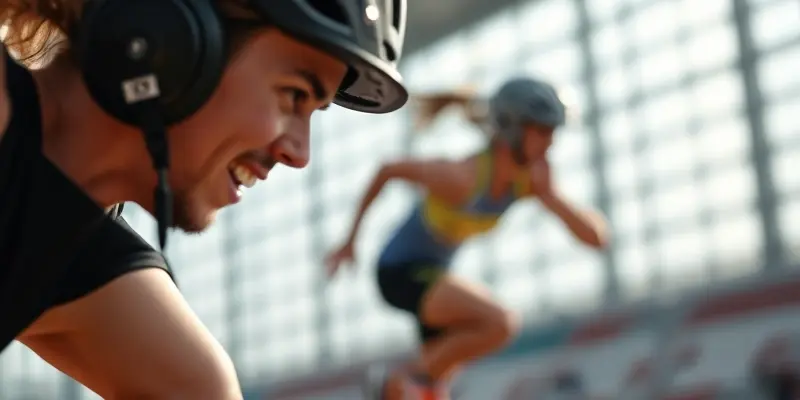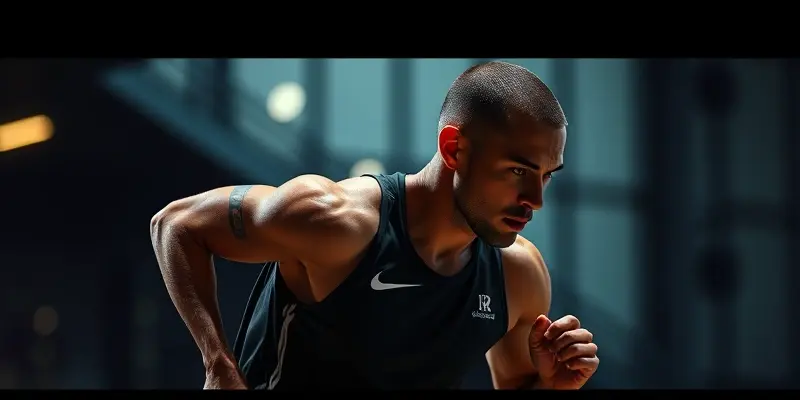By GymPulse Club fitness experts | Your trusted resource for science-backed training, wellness, and inspiration
Adaptive sports empower people of all abilities to move, compete, and find joy through physical activity. Whether you’re a beginner, a competitive athlete, or simply interested in wellness, understanding recovery and injury prevention in adaptive sports is key to long-term success and enjoyment.
Let’s explore what sets adaptive sports apart, common injuries to watch for, and—most importantly—how to bounce back stronger, both physically and mentally.
What Are Adaptive Sports?
If you’ve ever watched wheelchair basketball or admired athletes in the Paralympics, you’ve witnessed adaptive sports in action. They are tailored versions of traditional sports—like rugby, tennis, or cycling—using specialized equipment and rules so everyone can participate.
Common Examples:
- Wheelchair basketball, rugby, and tennis
- Sitting volleyball and sled hockey
- Dance, cycling, martial arts, and more
The beauty of adaptive sports is inclusivity. With the right support, anyone—regardless of physical differences—can develop skills, join a team, and enjoy movement.
Common Injuries in Adaptive Sports
Just like in any sport, injuries happen. The unique demands of adaptive sports, plus individualized movement patterns, bring their own set of challenges.
Frequent injuries include:
- Shoulder strains/tendinitis: Especially in wheelchair users, from repetitive pushing or overhead movements.
- Pressure sores: Caused by prolonged sitting or ill-fitting equipment.
- Sprains and strains: From unexpected impacts or overcompensation.
- Overuse injuries: Often affecting upper limbs and joints.
Awareness is the first step. Knowing what to watch for helps you act early and address issues before they become setbacks.
Proven Injury Prevention Strategies
Every athlete—adaptive or not—should prioritize prevention. Here’s how to keep your body resilient:
- Warm up thoroughly: Start each session with gentle, dynamic movements, especially shoulders, wrists, or any area prone to tightness.
- Check your equipment: Make sure wheelchairs, prosthetics, or support aids are properly fitted and well-maintained.
- Ramp up gradually: Avoid sudden jumps in intensity. Let muscles and joints adapt to new loads or skills.
- Cross-train smartly: Mix activities (like swimming, resistance bands, or yoga) to balance out heavily used muscle groups.
Imagine your body is like a car: regular servicing and smart driving keep it running smoothly, no matter the terrain.
Smart Recovery Tactics for All Athletes
Recovery isn’t just about lying still—active recovery fuels progress. Here’s what works best:
- Rest and active recovery: Gentle moves, like stretching or slow-paced cycles, maintain mobility while healing.
- Structured rehab: Follow a program crafted by a physical therapist experienced with adaptive athletes.
- Tools that help:
- Electrical stimulation devices: Encourage blood flow and prevent muscle loss—great for immobilized limbs.
- Foam rollers and massage tools: Adapted for different abilities, these ease tightness and speed healing.
- Wearable movement sensors: They catch inefficient patterns, helping prevent new or compensatory injuries.
Pro tip: Celebrate small gains—like improved range of motion or less pain. Progress is progress!
Nutrition That Accelerates Healing
What you eat after injury matters—a lot. The right nutrition gets you back in action faster.
- Prioritize protein: Aim for lean chicken, eggs, tofu, or Greek yogurt to rebuild muscle.
- Add anti-inflammatory foods: Think salmon, leafy greens, turmeric, berries, and nuts.
- Micronutrients matter: Vitamins C & D, calcium, and zinc are all critical for tissue and bone repair. For a deeper dive, see our articles on vitamin C immunity athletes and calcium for bone strength.
- Hydrate smartly: Many adaptive athletes have altered sweat responses, so check urine color as a hydration cue.
Sample recovery meal: Grilled salmon, spinach salad with sunflower seeds, and a citrus fruit.
Staying Motivated Through Recovery
Mental recovery is as vital as physical. Injury can be frustrating—but there are proven ways to keep spirits high:
- Set small, achievable goals: For example, “increase shoulder flexibility by 5 degrees in two weeks.”
- Use visualization and mindfulness: Picture successful movement or practice gratitude for progress. Learn more about visualization for healing.
- Lean on support: Join adaptive sports communities or find a peer mentor—they truly “get it.”
- Seek professional help: A sports psychologist can offer tailored motivation and resilience strategies.
Remember, setbacks are just setups for future comebacks.
Conclusion
Adaptive sports offer incredible opportunities—regardless of ability level. By mastering injury prevention and recovery fundamentals, you’ll move with confidence, heal smarter, and rediscover the sheer joy of athletic achievement.
For extra support, check out resources like Move United or connect with experienced trainers and therapists who specialize in adaptive sports. At GymPulse Club, we’re here to help you achieve your goals—one rep, recovery, and victory at a time.
Stay strong. Stay motivated. See you on the court, track, or field!

